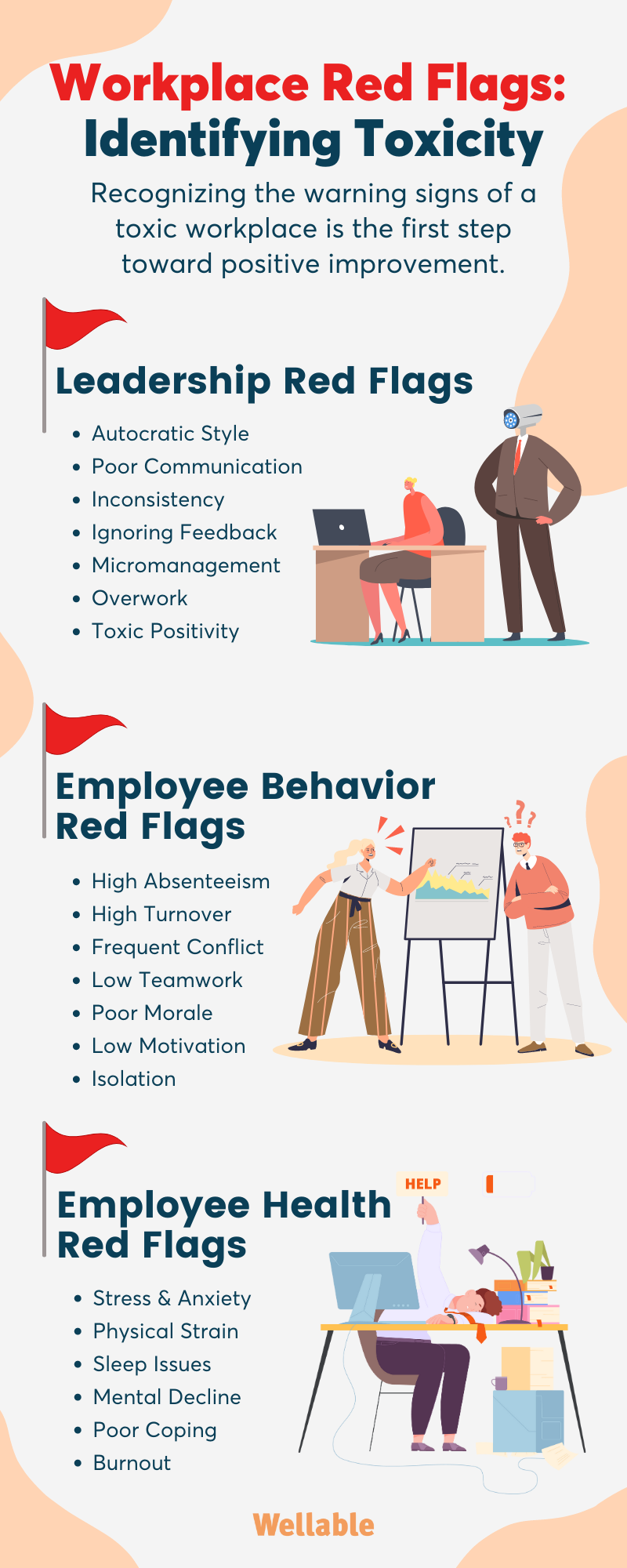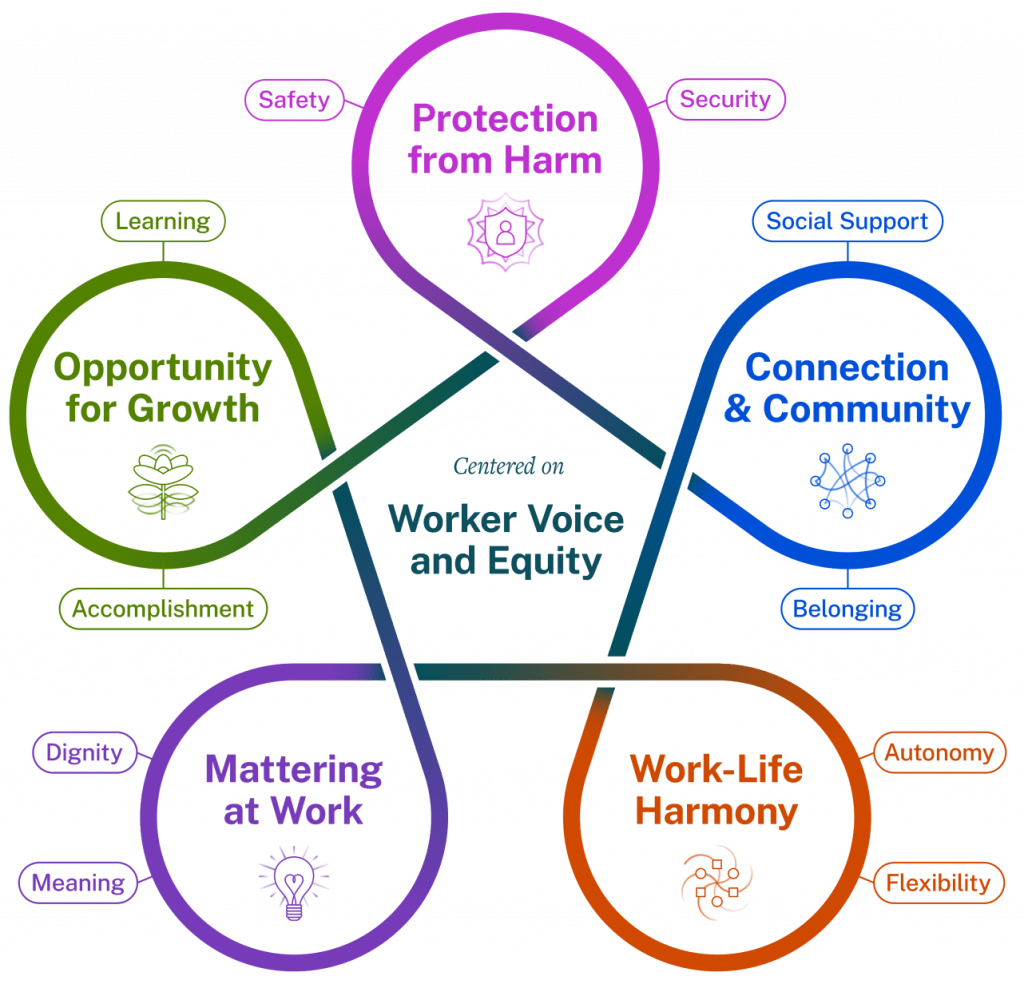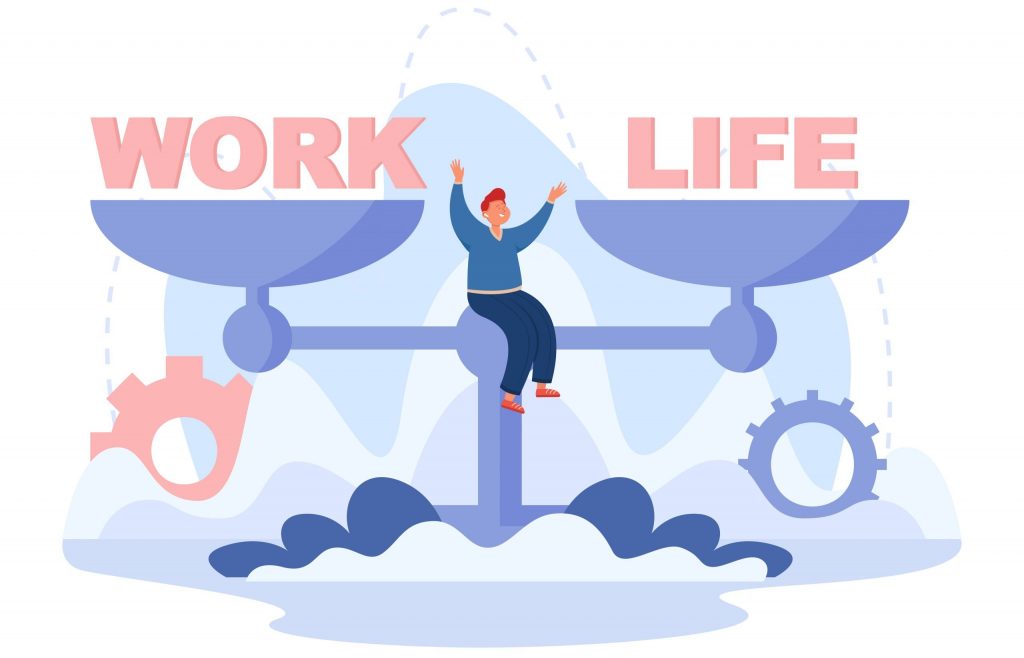The average employee spends a substantial portion of their life at work. So, it’s no surprise that the work environment plays a pivotal role in employee mental and emotional well-being.
Recent findings from the American Psychological Association (APA) underscore the gravity of this issue, revealing alarming statistics that shed light on the prevalence and consequences of workplace toxicity. From interpersonal dynamics to managerial practices, a toxic workplace can erode organizational culture, hamper employee satisfaction, and contribute to higher turnover rates.
This article explores the data associated with workplace toxicity, unpacks the signs of toxicity within the workplace, and proposes strategies to foster a healthier work environment.
Pressed for time? Here’s a quick summary…
- Prevalence of workplace toxicity: Nearly 20% of employees battle toxic work conditions.
- Indicators of a toxic workplace: Failure to act on employee feedback, ignoring work-life balance, and inconsistent or unfair treatment of employees are a few examples of leadership behaviors that contribute to a toxic environment.
- Impact on employees: Employees who experience toxicity in the workplace may display signs such as increased absenteeism, reduced productivity, and lowered enthusiasm.
- How to combat workplace toxicity: Addressing toxicity in the workplace can be done by seeking and adapting to employee feedback, redefining the company culture, providing training to managers, and offering mental health support and initiatives.
Workplace Toxicity Defined: A Dive Into The Data
Workplace toxicity refers to harmful conditions that directly impact employee mental health. Recent findings from APA’s 2023 Work in America Survey shed light on the prevalence and consequences of workplace toxicity:
- More than one in five (22%) workers experience harm to their mental health while on the job.
- More than one in five (22%) of employees experienced harassment in the last year, up from 14% in 2022.
Women and LGBTQ+ individuals are particularly vulnerable, with 38% of women reporting sexual harassment and 38% of LGBTQ+ members facing physical, verbal, or sexual harassment.
Workplace toxicity takes on different shades across industries and job functions:
- Customer service positions (31% of respondents) report higher verbal abuse rates compared to manual laborers (23%) and office workers (22%).
- Manual laborers (12%) experience higher levels of organizational physical violence than office workers (5%) and customer service personnel (6%).
The survey also underscores the gravity of workplace discrimination and derogatory behaviors:
- More than one in five (22%) employees witness discrimination in their workplace, and 15% have experienced it.
- Over a quarter (28%) of workers have witnessed negative slights, insults, or jokes toward someone’s identity or background. Nearly one-fifth (19%) have been the target of such behaviors.
Employees in toxic environments are three times more likely to experience harm to their mental health than those in healthy workplaces. With 19% of workers reporting their workplace as toxic, the situation is far from reassuring.
Signs Of A Toxic Workplace
Recognizing common signs of a toxic workplace is crucial to identify and address this issue.

Employee Behavior: Common Behavioral Indicators
- Higher absenteeism and turnover rates
- Frequent conflicts and disputes among colleagues
- Decreased collaboration and strained interpersonal relationships
- A pervasive sense of negativity, cynicism, and low morale
- Lack of enthusiasm and lower productivity
- Isolation or withdrawal from team activities
Management Practices: Misguided Actions From Leadership
- Authoritarian and unapproachable management style
- Lack of transparency and open communication channels
- Favoritism or inconsistent treatment of employees
- Failure to act upon employee feedback and concerns
- Micromanagement and excessive control over tasks
- Ignoring work-life balance and overloading employees with tasks
- Promotion of toxic positivity, dismissing valid concerns and emotions
Physical & Mental Symptoms: Personal Health Impacts
- Increased stress levels and heightened anxiety
- Headaches, fatigue, and physical discomfort
- Sleep disturbances and insomnia
- Decline in overall mental well-being
- Unhealthy coping mechanisms, such as substance use
- Development of burnout

How Employers Can Address Toxicity
While workplace toxicity remains a pressing problem, the APA data also indicates positive strides in workplace mental health support:
- The majority (77%) of workers feel satisfied with their employer’s support for mental health and well-being.
- Over half (59%) of employees say their employer regularly provides information about available mental health resources.

This shift towards a supportive work environment is not just a fleeting trend; it’s a clear demand from the workforce. An overwhelming 92% of respondents emphasized the importance of an organization valuing their emotional and psychological well-being, stressing the significance of employer-provided mental health support.
Given this context, it’s evident that employers are central in curbing workplace toxicity. By initiating several proactive strategies, they have the potential to not only safeguard employee mental well-being but also foster a more harmonious work environment:
Apply The U.S. Surgeon General’s Framework
The US Surgeon General’s Framework for Mental Health and Well-Being in the Workplace highlights five essential elements to support employees’ mental health and well-being:
- Protection from harm
- Opportunity for growth
- Mattering at work
- Work-life harmony
- Connection and community

“Protection from harm” is paramount to combatting toxicity and creating conditions for psychological safety. This concept is grounded in two human needs: safety and security.
- Safety: Protection from physical and non-physical harm, including injury, illness, discrimination, bullying, and harassment
- Security: Feeling secure financially and in the job’s future
Employers bear the responsibility of nurturing psychological safety for employees, creating an environment where individuals feel safe to express themselves, engage openly, and contribute meaningfully. This commitment extends beyond physical safety to encompass emotional well-being, reflecting a holistic dedication to employee health.
Seek & Adapt To Feedback
Various feedback mechanisms and policies empower employees to voice their concerns, such as:
- Initiating employee pulse surveys
- Establishing regular manager check-ins
- Implementing an open-door policy
These methods eliminate the fear of repercussion or judgment, allowing open dialogue to flourish. Establishing clear channels for employees to speak up promotes transparency, builds trust, and enables timely resolution of potential toxicity.
However, simply having these channels isn’t enough. The key lies in actively listening to and acting upon the feedback received. Doing so displays a genuine commitment to addressing concerns and improving mental well-being.
Redefine Company Culture

Anchor the workplace in core values that embody respect, empathy, and collaboration, and outline explicit expectations to act as a roadmap for behavior. By redefining the company culture, organizations encourage interactions and decisions rooted in fostering a healthy workplace, creating a positive ripple effect throughout the company. This shift signifies a dedication to eliminating toxicity and nurturing an environment where every employee feels valued.
Provide Training
Equip managers with specialized training that helps them to recognize and counteract toxicity. Through tailored training, managers can develop a keen eye for potential problems, even those that are subtle and might otherwise go unnoticed. Armed with such knowledge and skills, managers become champions of a positive work environment. They not only intervene effectively when issues arise but also proactively create an atmosphere where all employees feel valued and supported, thereby bolstering overall mental well-being.
Promote Work-Life Balance

“Hustle culture” can be toxic and detrimental to employee well-being. A healthy work-life balance contributes to reduced stress and a more vibrant, engaged workforce. This can be achieved by:
- Implementing flexible work arrangements
- Assigning reasonable and manageable workloads
- Encouraging regular breaks and downtime
Nurture Mental Health Through Wellness Initiatives
Implementing initiatives focused on mental and emotional well-being can help employees manage stress and maintain well-being. These may include:
- Employee Assistance Programs
- Employee Resource Groups
- Mental health workshops
- Mindfulness and meditation sessions
- Mental wellness challenges
- Quiet spaces in the office
Offer External Support
In addition to internal wellness initiatives, consider partnering with external organizations to provide mental health resources. These collaborations enhance access to specialized expertise and a broader range of services. Such partnerships can introduce employees to new therapeutic approaches, counseling options, or workshops that might not be feasible to host in-house. By taking this holistic approach, companies demonstrate a profound commitment to employee well-being, enriching support systems and reinforcing a caring work environment.
Importance Of Mutual Responsibility
In the battle against workplace toxicity, mutual responsibility between employers and employees stands as a cornerstone.

- Employers bear the duty of creating and upholding a healthy environment. This includes proactively implementing policies, offering support resources, and fostering an atmosphere that nurtures psychological safety and mental well-being. It’s also their role to respond sensitively to concerns, ensuring that employees feel heard and valued.
- Employees must voice their needs and seek support when necessary. By engaging with the workplace community, participating in initiatives, and promoting positive interpersonal relationships, they forge a path towards a healthier and more positive future. This benefits not only themselves but also their colleagues and the broader work culture.
As both parties recognize and fulfill their respective roles, the symbiotic relationship between employer and employee builds a workplace culture that thrives on safety, trust, and a commitment to everyone’s welfare.












